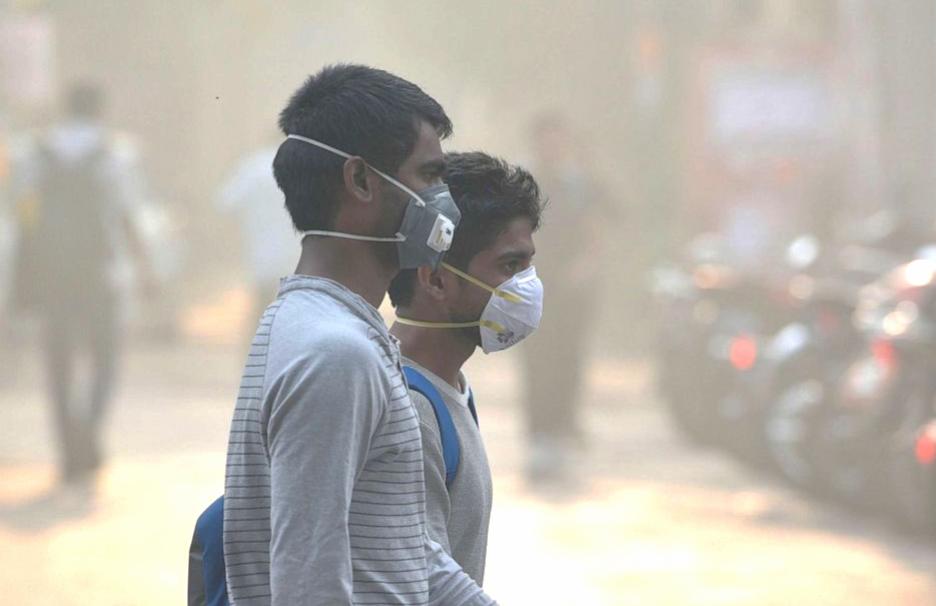Delhi’s air quality continues to remain in the ‘severe’ category, with an AQI of 405, despite experiencing light rainfall.

New Delhi: The capital’s air quality crisis showed no sign of improvement on Monday, as the Air Quality Index (AQI) remained firmly in the ‘severe’ category at 405. Despite light rain, the 24-hour average AQI recorded a hazardous 406 on Monday, signaling ongoing pollution troubles. According to the Central Pollution Control Board (CPCB), the situation shows no respite from the harmful air pollution.
Why Rain Didn’t Help the Pollution Situation
Environmental experts explained that the light rain, combined with low wind speeds, was insufficient to alleviate the pollution. Instead, these weather conditions caused tiny pollutants, like PM 2.5, to remain suspended in the air. PM 2.5 particles, which are particularly dangerous, can penetrate deep into the lungs, leading to serious health issues.
Continued Pollution in Delhi Despite Drizzle
Manu Sharma, an environmental expert, emphasized the worsening situation in Delhi NCR, noting that pollutants like PM 2.5 and PM 10 remain trapped in the air due to stagnant weather patterns. He mentioned that the drizzle wasn’t significant enough to disperse these pollutants effectively. Sharma further warned that the combination of severe pollution and cold weather creates a “dangerous cocktail” for residents. He also criticized the lack of proper enforcement of the Graded Response Action Plan (GRAP), calling the current air quality conditions in Delhi “like a gas chamber.”
Weather’s Role in Delhi’s Air Quality Crisis
The India Meteorological Department (IMD) reported that Delhi’s maximum temperature on Monday was 18.4°C, 2.3°C below the seasonal average, and the minimum temperature dropped to 8.6°C. The weather, with high humidity levels (79% to 95%) and fog, made the pollution situation even worse.
Climate expert SN Mishra pointed out the delicate relationship between weather, pollution, and policy. He explained that while favorable winds in the first half of December helped clear pollutants, weak winds after December 16 allowed them to accumulate, worsening the city’s air quality. Mishra added that Delhi’s air quality is deeply impacted by the weather and stressed that without stronger policy measures and stricter enforcement of emission controls, the situation is unlikely to improve.
GRAP Measures Prove Insufficient
Since December 16, GRAP Stage IV measures, including restrictions on construction, demolition, and industrial activities, have been implemented in Delhi-NCR. However, experts and residents have criticized these actions as insufficient to tackle the pollution crisis. Sharma argued that policies need to focus on both emergency measures and long-term strategies to curb emissions effectively. The Supreme Court has urged authorities to adopt proactive measures rather than relying solely on favorable weather to improve air quality.
Mumbai Takes Action Against Pollution
While Delhi faces a severe pollution crisis, Mumbai also struggles with declining air quality. On Monday, the AQI in Mumbai stood at 135, categorized as “moderate.” However, concerns over further deterioration prompted the Brihanmumbai Municipal Corporation (BMC) to issue new guidelines, including regular road sweeping and water sprinkling to reduce dust, and stricter monitoring of construction debris transport. Violating vehicles will face penalties.
The Road Ahead for Delhi’s Pollution Crisis
The IMD forecasted cloudy skies and light rain for Delhi on Tuesday, with temperatures expected to hover around 19°C and 9°C. While this might bring some temporary relief, experts warn that without addressing the root causes of pollution and implementing stricter policies, the long-term effects will continue to be harmful.
Mishra concluded that Delhi’s air quality crisis serves as a stark reminder of the dangers of unchecked emissions. He stressed that relying on weather changes for relief is not sustainable, and comprehensive policy reforms are essential to combat the ongoing pollution problem.
As Delhi struggles to control its air quality, the situation serves as a critical lesson for other metropolitan regions to take urgent action to safeguard environmental health and prevent irreversible damage.